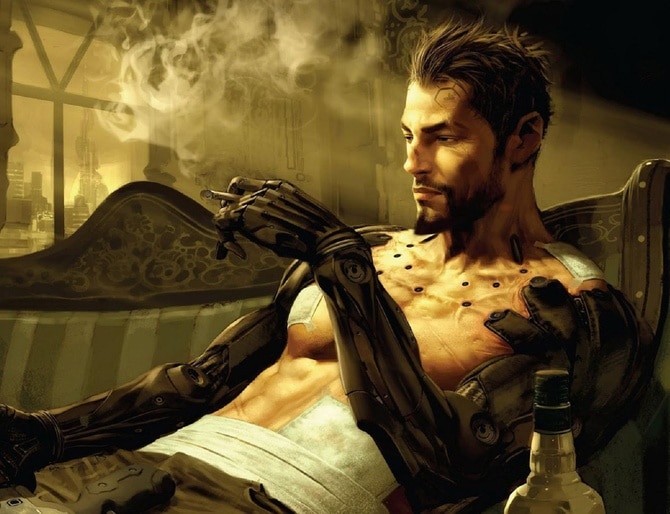Hype is a funny thing. When done right, it can lead to an amazing experience that gamers remember forever. When done wrong, hype can derail even the most promising of titles. We’ve all heard games being declared as “The next Halo” or “The next Grand Theft Auto” – only to disappear without trace upon release. These are the videogames that hyped big, then gamers just kind of forgot about them – making that hype all the more awkward.
HONOURABLE MENTIONS
Red Steel: Touted as the Nintendo Wii’s killer app – the pre-release hype was real for this one. Sadly, misleading trailers and awkward gameplay killed any hope the game had upon launch.
The Division: Not quite dead yet, but it’s fair to say that the pre-release hype for this game was astronomical. Shame when the game landed, people forgot about it in their droves.
10. BRUTE FORCE
Before Release: Xbox owners were insanely hyped for this exclusive title. Unveiled in late 2001, it would be the games showing at E3 2002 that would ultimately push the game into “hype mode”. The press swallowed this hype whole, christening the game as “The next Halo” in some corners. Who could blame them really? In 2002, this game looked gorgeous, and seemed to have everything going for it.
After Release: The outsold the original Halo at in its first two days on sale, breaking Xbox sales records. This didn’t last however – as gamers quickly realized that many of the promised features weren’t in the final game. The much touted co-op mechanics were barely utilized, while the action was pretty mindless. While game picked up some good reviews, it didn’t quite live up to the expectations. Does anyone remember Brute Force?
9. BRINK
Before Release: When Bethesda unveiled Brink, they touted its hugely impressive multiplayer chops. The promise of a massive multiplayer shoot-em-up seemed like a dream – and with the adoption of online gameplay into the mainstream – Brink certainly had all the right ideas. In the weeks before this game landed, there was huge expectation for Splash Damages title.
After Release: The game was met with harsh reviews, most of which slated the state the game arrived in. Half-baked ideas and woefully utilized mechanics left the core gameplay feeling underwhelming. What should have been the crowning glory for multiplayer shooters quickly fizzled out – as gamers moved on to bigger and better titles.
8. DEUS EX: INVISIBLE WAR
Before Release: The sequel to one of the most beloved PC games of all time should have been a surefire hit. When the game was announced in 2002, gamers couldn’t wait to get their hands on the followup. Touted as a potential game of the year by numerous outlets, it seemed nothing could disrupt the sequel.
After Release: Reviews were relatively kind to Invisible war, but gamers less so. Citing dumbed down mechanics, less interesting locales and a lack of the original ideas. The game was a slog, clearly catering to the console market ahead of the PC gamers that made the original title so iconic. Negative word of mouth spread, and the game sold poorly as a result. It resulted in the franchise being put on ice until Human Revolution in 2013.
7. THE ORDER 1886
Before Release: Showcased largely at E3, Sony pushed The Order 1886 as a cinematic experience for its PlayStation 4 console. The graphics looked amazing, while the mix of steampunk and Victorian era intrigue helped lend the game a unique feel. Sony fans were hyped, and in the weeks building up to release, it felt like The Order 1886 could be a breakout hit for the console.
After Release: It all went to hell pretty quickly. Reviews lamented the games lack of ambition, forced direction and repeat boss battles. The story was dull, the world was linear and the entire experience felt insanely bottlenecked. Perhaps worst of all, the game reused boss battle set pieces numerous times – meaning that even the short game time felt repetitive. Fans very quickly moved on, as The Order 1886
6. GEIST
Before Release: The first M-rated game co-developed by Nintendo, Geist was an attempt to add some much needed adult orientated content to Nintendo’s flagging Gamecube. Boasting an ambitious possession system, that allowed the gamer to leap between bodies and fight as many different characters, the game had a lot going for it. Nintendo fans in particular were excited, as it signaled a bold, new direction for one of the industry’s more kid-friendly company’s.
After Release: Reviews panned the game as a broken mess. The much touted possession system worked, but was so limited that it felt like a waste. Add in that the overall game lacked any of Nintendo’s typical unique flair – and you had a game that never really connected with audiences. Ask many Nintendo gamers about Geist, you’ll be asked “What’s that?”.
5. BATTLEBORN
Before Release: 2K’s second attempt at creating a mega-multiplayer franchise looked set to be a surefire winner. Battleborn had a massive advertising campaign that showcased all of its characters, it’s unique features and . 2 million gamers signed up for the games open BETA and the general conscientious was that Battleborn could be a major player in the industry.
After Release: One word, Overwatch. Blizzard’s titan of a multiplayer shooter arrived in the same month as Battleborn – and captured gamers imaginations way more. As that game went on to shatter milestone after milestone, Battleborn’s small community all but dried up. By the end of 2016, there was feverish talk of the game possibly going free-to-play – attempting to salvage what it could from the ruins of its bust launch. Battleborn was the wrong game, at the wrong time.
4. MAG
Before Release: Pushed heavily by Sony as a showcase of PSN’s online capabilities – MAG allowed up to 128 players to join massively online FPS. Nothing of this scale had ever been achieved before on consoles – and it was a truly staggering achievement. As the game neared release, some heralded it as the next step in massive online multiplayer shooters. This was one of Sony’s big guns in fighting back against Xbox 360.
After Release: In no way did that pre-release hype translate into anything but disappointment for anyone who bought the game. Not that the core game was bad, there just weren’t that many people interested in actually buying the game. MAG was quickly forgotten. Add in extreme lag, boring mechanics and a lack of community – MAG was quietly shuttered. Given that no game has ever tried to replicate this games one major selling point – it’s fair to say that nobody really wants it.
3. DAIKATANA
Before Release: After leaving id Software, John Romero made the decision to to form ION Storm. That company’s first project would be Daikatana – a title that promised to recapture the fast and furious spirit of early 1990’s first person shooter. A marketing campaign by Romero touted the game that as the next big thing – and expectations rose as the game seemingly crawled towards release.
After Release: After Daikatana arrived, gamers were left bemused. Instead of a great videogame outing, they were left with an experience that felt behind the times. Thanks to numerous delays, the games core mechanics didn’t mesh with the direction of the genre – leading to an incredibly frustrating experience. Worse still, the game was buggy as hell and incomplete in many places. Gamers were quick to move on when Romero’s strong claims ultimately fell flat.
2. EVOLVE
Before Release: Evolve had a lot going for it. Developed by Turtle Rock Studios (The same core team that created the hugely popular Left 4 Dead series) EVOLVE was unveiled to massive excitement. It looked amazing and its focus on 4 vs. 1 gameplay was a breath of multiplayer fresh air. Not only were media outlets hyping the game massively, it was awarded numerous “game of E3” awards by various we
After Release: The game launched to strong initial sales, but crashed hard when it became apparent there wasn’t much content for gamers to dive into. What made this situation worse was the sheer amount of DLC content available at launch, in a a full priced title that lacked content. It was inexcusable and the hype around the repeititve game quickly tailed off. Just over a year after launching, the game attempted to go free-to-play – before ultimately being shuttered by 2K.
1, TITANFALL 1
Before Release: The marketing campaign around the original Titanfall was insane. The game was pushed as a AAA-franchise right out the gate, with an insane amount of coverage among media outlets. It’s freestyle running helped to generate a huge amount of buzz, with talk of a mega franchise in the making.
After Release: The game sold monumentally well, but was forgotten almost overnight. Gamers abandoned the title in their droves, as the developers began work on the sequel. Because of the multiplayer nature of the game, Titanfall 1 was left to spin its wheels. Reviews critiqued the lack of single player campaign and lack of content for online gamers to play through. Very quickly, that pre-release hype turned to disappointment – as gamers abandoned the servers. Titanfall 2 arrived in 2016 – but a lot of gamers still remember the awkwardly short lifespan of its original incarnation.












